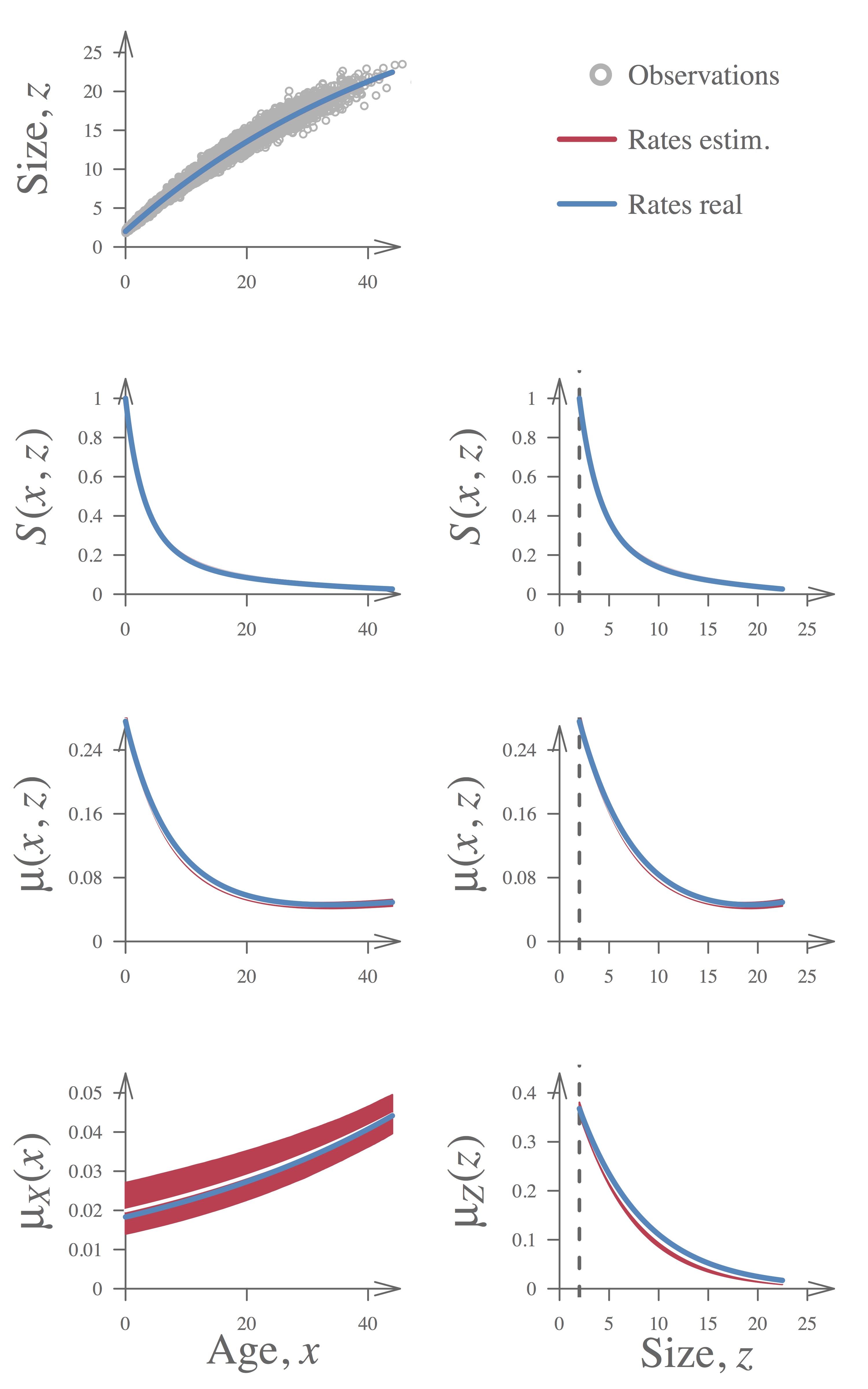

|
| Home | People | Projects | Publications | Contact |
Mortality as a bivariate function of age and sizeMortality in organisms that grow indefinitely (i.e. indeterminate growers), is thought to be driven primarily by size. However, a number of ageing mechanisms also act as functions of age. Thus, to explain mortality in these species, both size and age need to be explicitly modeled. In collaboration with Ralf Schaible from the Max Planck Institute for Demographic Research, we have developed a model that treats age- and size-specific mortality as a bivariate process (Colchero & Schaible 2014), where the unobserved univariate effects of age and size on mortality are treated as latent processes. |
 |
 |
With this model we show that, in theory, a population can show declining mortality with age and size while the underlying contribution of age, as a proxy for chronological deterioration, is of typical senescence (figure above). On the other hand, a seemingly senescent population can have underlying age-related negative senescence, which is, however, overcome by negative underlying size effects (figure on the left). |
|
We then constructed a Bayesian inference framework around the model, which recovers accurately all of the mortality parameters form multiple simulated data. This method facilitates the exploration of the underlying (unobserved) contributions of age and size to mortality, while it can improve the demographic models commonly applied to a vast number of species of commercial and conservation importance such as fish, trees or bivalves. In addition, the application of these methods can contribute to our understanding of the evolutionary mechanisms of senescence in species that do not fit the established theories. |
 |

|